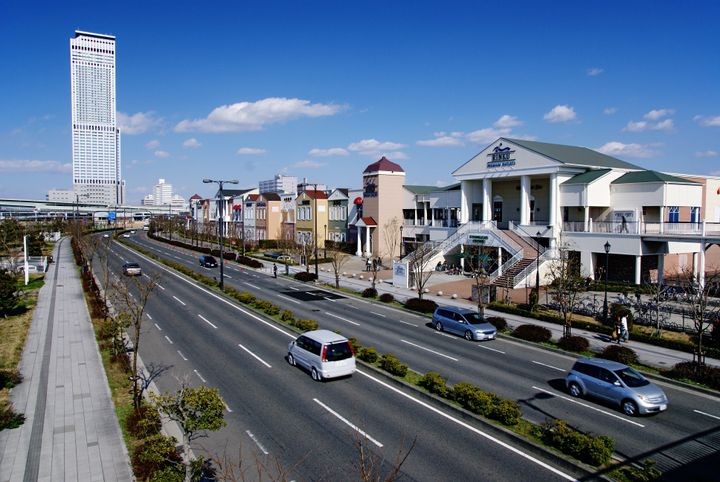
A couple years ago, an American journalist during a 10 year residency in Tokyo offered a provocative assessment: Japan, he said, had decided to gracefully withdraw from the world stage. This month, during my first return to Japan in a decade, I put that assertion to an English friend who had lived even longer in Tokyo. "That's about right," he said, "Battered by deflation and a overly strong currency, the Japanese have concluded that they can't compete with a rising China and are withdrawing into themselves."
These startling conclusions prompted a reflection to a visit 29 years earlier. In the autumn of 1983, I accompanied an industrial study mission of two-dozen American executives eager to learn how America could combat the competitive threat posed by a resurgent Japanese economy.
In a whirlwind two-weeks, the American industrialists were lectured by experts and visited export enterprises throughout the country. We toured auto plants, shipbuilders and most interestingly of all; the Yamazaki Machine Tool Company in Nagoya.
There we found a new factory the size of a football field, where 20 industrial robots did all the work. The mobile robots -- lights flashing above nameplates of Disney characters -- whizzed down aisles delivering materials to workstations where computerized grinders milled precision components for the auto industry. In the entire facility we counted only three workers. We were informed that not a single worker was assigned to the fully automated overnight shift. Company executives expressed pride that Japan had recently overtaken the United States in manufacturing machine tools.
On the bus ride to the hotel, a member of our party declared, "Boys, the game is up. There's no way we can compete with that."
Fast-forward to 2012 and the future didn't turn out quite the way the sobered industrialists expected. Japan's 27-year long dominance in machine tool production came to an end two years ago. China, where production costs are 40 percent lower, has seized the top spot even though the Japanese emphasize that they continue to lead in quality.
Pummeled by a strong currency and two decades of deflation, Japanese companies are shifting production to China and elsewhere. Japan's industrial core is eroding and threatened with being hollowed out, as happened in parts of the U.S. rust belt. Long ago, Japan ceased being anyone's economic model. Growth figures tell the tale of relative decline. From 1953 to 1973, a still rebuilding Japan grew by 9 percent annually. From 1974 to 1990 GDP growth slowed to 4.2 percent while from 1991 to present growth has barely been positive, averaging a mere .5 percent annually.
What went wrong? How did a nation with world-class companies, a highly educated work force, and a well-deserved reputation for efficiency and discipline descend into protracted decline?
The high point of the Japanese economy appears to have been 1989, when property prices peaked and Tokyo's main stock market index reached a record high of 39,000. By 2007, the stock market had recovered to 18,000, but since then it has fallen another 50 percent to the current 9,000.
Meanwhile the exchange rate of the yen, regarded as a reflection of the nation's economic health, has steadily appreciated from the 227 yen to the dollar that prevailed in 1983 to a mere 78 yen to the dollar today. Phillip Suttle, chief economist at Washington's Institute of International Finance, believes the yen is overvalued by half and should trade in the range of 130 yen to the dollar. At any rate, the currency's rise has done little to reduce Japan's chronic balance of payments surplus. Japan remains the largest foreign holder of U.S. treasuries.
Since Japan's asset bubbles burst over 20 years ago, policy makers have persistently fiddled with the levers of monetary and fiscal policy but their efforts have spectacularly failed. Meanwhile the brutal deflation that accompanied the bust persists. Falling prices have translated into massive wealth destruction. Stop and go monetary and fiscal stimulus accomplished little. Consumer prices have declined for seven of the past 10 years.
There is no clear path out of the deflationary trap. Federal Reserve Chairman Ben Bernanke, then a professor at Princeton, counseled the Japanese in 1999 to open the monetary floodgates. He wrote:
Japanese monetary policy seems paralyzed, with a paralysis that is largely self-induced. Most striking is the apparent unwillingness of the monetary authorities to experiment, to try anything that isn't absolutely guaranteed to work.
Japanese officials counter that they've tried monetary stimulus, including zero interest rates and quantitative easing, with meager results. Richard Koo, chief economist at Nomura Securities in Tokyo, argues that because Japan is stuck in a balance sheet recession in which companies and households are retrenching, low interest rates are not stimulative because neither businesses nor households wish to borrow. He advocates massive fiscal stimulus, saying government spending is the only way to put a floor under sagging aggregate demand. Critics say past fiscal stimulus has ballooned the national debt to 200 percent of GDP.
Amid paralysis and debate, Japan drifts steadily lower. Its share of global output is shrinking while its GDP is eclipsed by China -- a nation with 10 times its population -- which is now the world's second largest economy.
The most troubling aspect of Japan's malaise may be psychological. Resistant to immigration and with a rapidly aging population, Japan seems to have its lost its self confidence along with its drive for economic leadership.
The once popular dictum of Mike Mansfield, respected former U.S. Ambassador to Japan, said that "The the United States and Japan comprise the world's most important bi-lateral relationship, bar none," now seems hopelessly quaint. So too does the title of the best seller from the early 1980s Japan as Number One.
Columnist Barry D. Wood, based in Washington, is the international economics correspondent for RTHK in Hong Kong.
